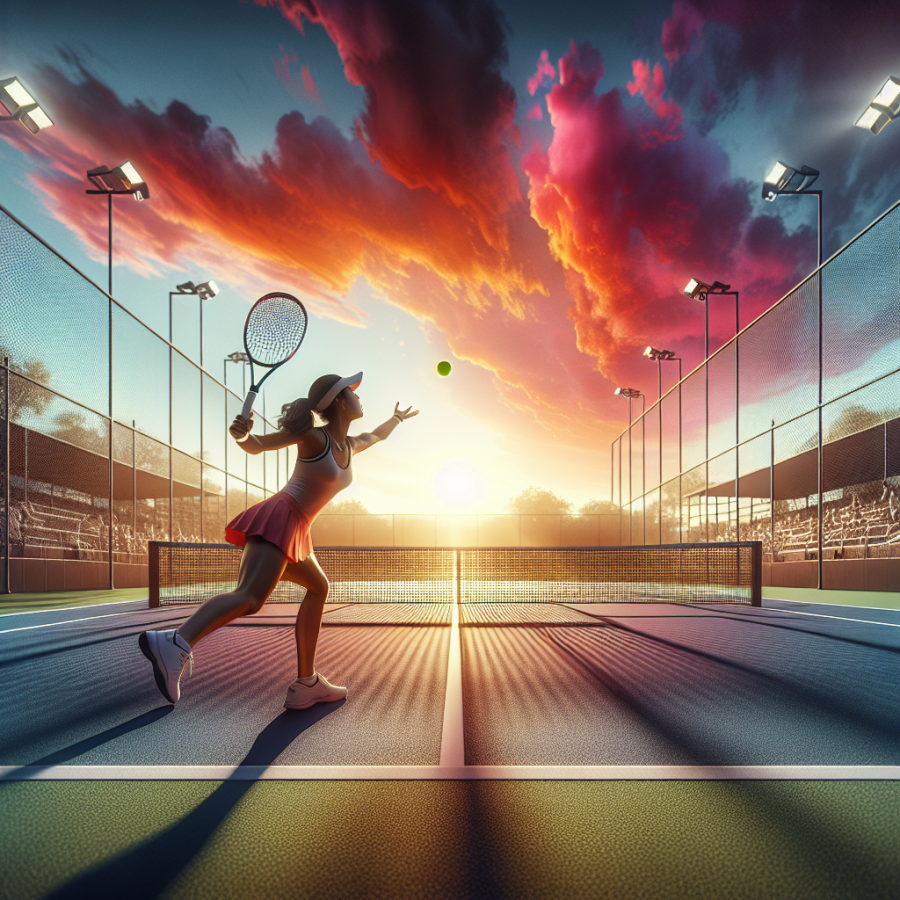Uncovering Essential Tennis Techniques for Intermediate and Advanced Players
As an intermediate or advanced tennis player, your aim should naturally be to polish your techniques and strive for improvement, so you can be the best player you can be. For reaching such goals, it's important to gain in-depth knowledge about certain tennis techniques, including the serve, the forehand and backhand strokes, and the volley and overhead, but going beyond the basic skills and delving into strategies and advanced techniques.
The Serve:
The serve is a key tennis shot and it plays a significant part in dictating the outcome of a game. Advanced players should aim to perfect their serve technique, where precision, power, and variation come together. Double faulting is a big no, thus, reliability of your serve is crucial. Now, there are many kinds of serves – flat serves, slice serves, kick serves etc. Each provide unique artillery to exploit your opponent's weaknesses and to mix things up.
Groundstrokes: Forehand & Backhand:
Groundstrokes, including forehand and backhand strokes, are typically the most used shots in tennis. They are typically used for both, defensive and offensive play. The secret to mastering forehands and backhands is consistency and accuracy in order to keep your opponent under pressure. The key attributes of powerful groundstrokes are reaction speed, technical form, and recovery skills. Topspin or slice, the choice of stroke also has to be strategically sound depending on the circumstance.
The Volley:
A crucial weapon for players game style is the net-play. Being efficient at the net enables a player to finish points quickly. The volley is a shot that can either be hit offensively or defensively, depending on the situation. Perfecting the volley technique requires quick reflexes, good hand-eye coordination, and excellent judgement of the ball's trajectory and speed.
Overhead Smash:
Another key shot in tennis is the overhead smash. When executed correctly, it can be a powerful weapon. It requires quick footwork to efficiently position yourself under the ball, a good eye to time the shot perfectly, and strength to deliver a crushing blow. This shot is particularly effective when the opponent is out of position and you have an open court to exploit.
Strategy and Tactics:
Finally, advanced tennis isn't just about executing shots, but construing a solid game plan and implementing a winning strategy. Knowing when to rally from the baseline, when to approach the net, or where to place a serve can make a huge difference.
Read also:
Deciphering Your Golf Kit: Which Clubs Do You Really Need?"
Breakdown of Professional Strategies: How to Master the Game of Tennis
Mastering the game of tennis isn't solely about technique; it also involves strategic thinking and mental toughness. Whether you're a rookie in the world of tennis or you've been playing this sport for years, understanding these professional strategies can help you elevate your gameplay to a new level.
One of the essential strategies in tennis is shot selection. Professional players master the art of choosing the right shot at the right time. This requires understanding the strengths and weaknesses of your opponent, as well as recognizing the right moment to launch an offensive or defensive play. To excel in shot selection, study different tennis matches and focus on how the pros handle various game situations. Try to implement these techniques on the court and observe which moves work best for you.
It is equally important to focus on the placement of your shots. Pros aim to keep their opponent on the move by hitting the ball into hard-to-reach areas. Mixing up your placement - hitting down the line, cross-court, and into the corners - can throw off your opponent's rhythm and give you an advantage. This strategy can also decrease the chances of your opponent hitting a winning shot.
Another strategy involves adjusting your game plan based on the playing surface. Different courts have different speeds and bounces, which can dramatically influence the game. Grass courts tend to be faster and have a lower bounce, favoring players who excel at serving and volleying. Clay courts, on the other hand, are slower and have a higher bounce, which favors defensive players with great stamina and solid groundstrokes.
Mastering the serve is non-negotiable. The serve is the only shot where the player has absolute control over where and how the ball is played. A strong serve can set the tone for the point and put the opponent on the back foot right from the start. Pros spend countless hours perfecting their serves, focusing on accuracy, speed, and spin.
In tennis, being strategic with your energy is crucial. Endurance plays a big part, especially in long and grueling matches. Professionals know when to conserve energy and when to give their all. If you watch professional matches, you'll find that players often go for a harder shot or a winner when they get shorter balls that require less running.
Lastly, the mental game is just as important as physical technique. Handling pressure, staying focused, keeping a positive attitude, and having the ability to adapt during the match are all crucial at the professional level.




